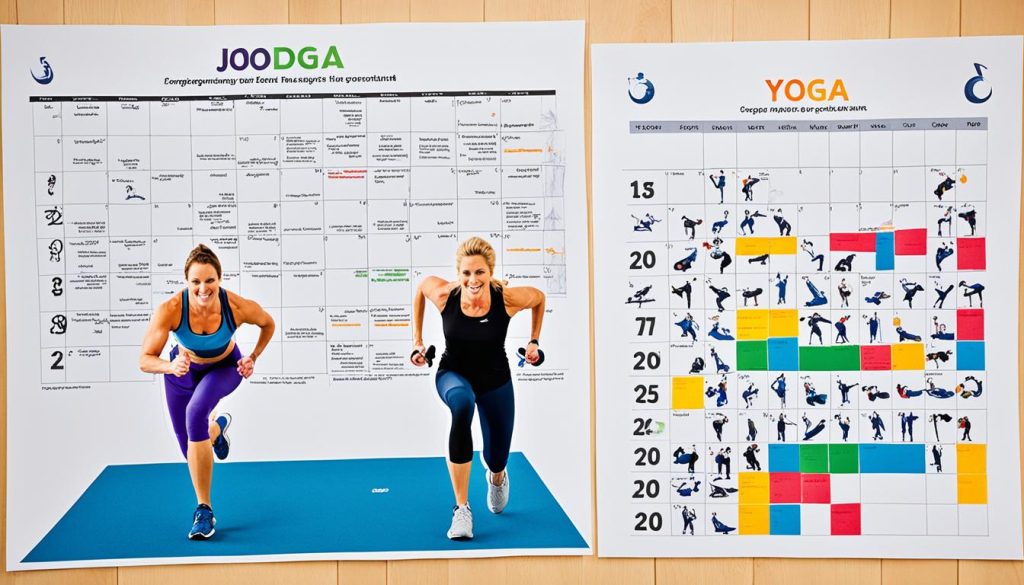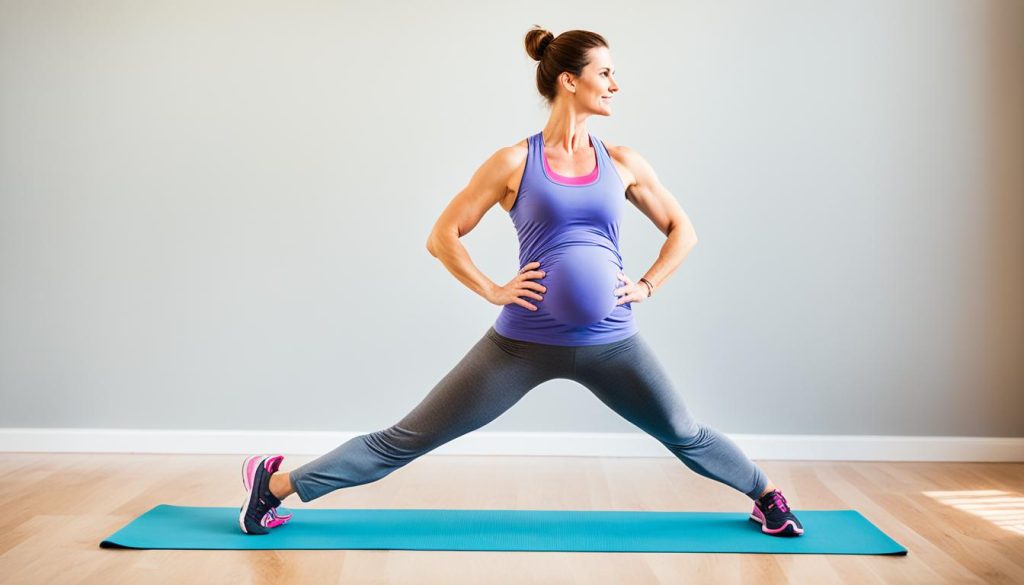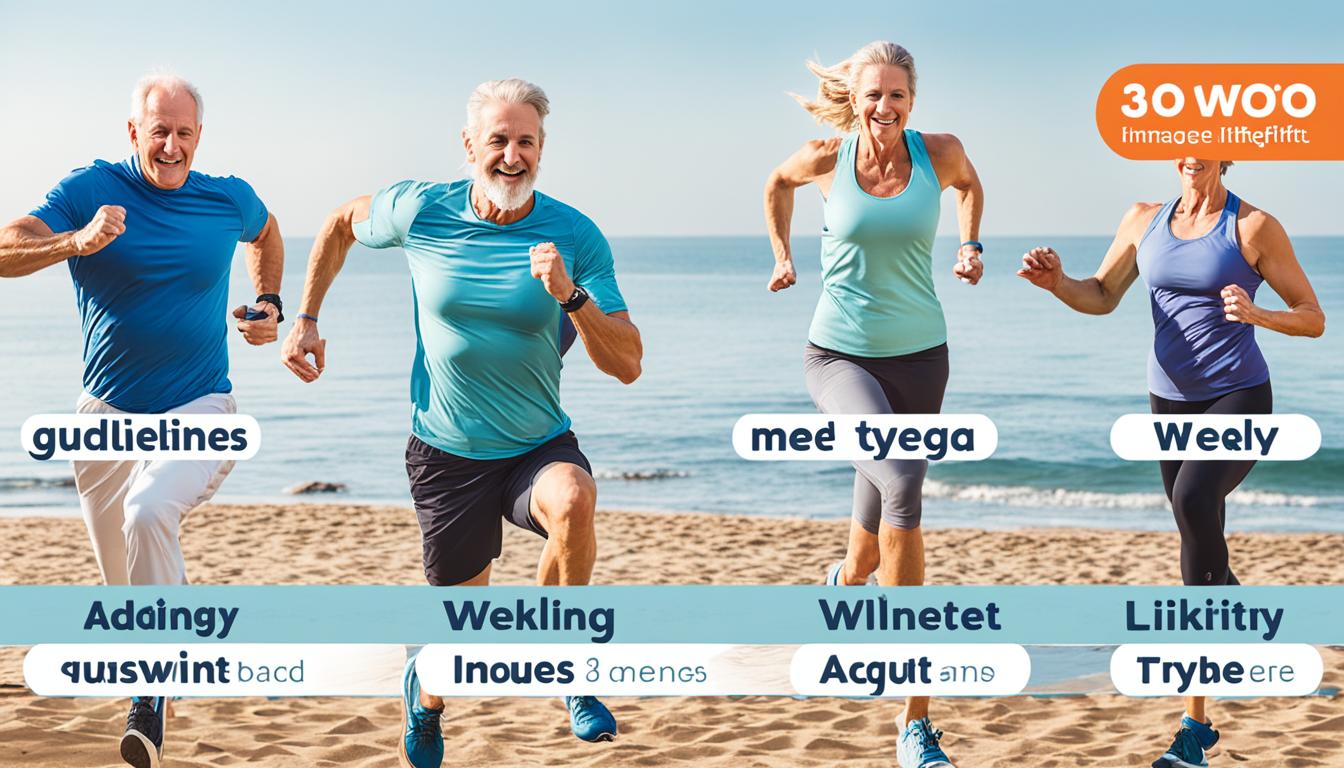In today’s fast-paced world, it is essential for adults to prioritize their physical well-being. Engaging in regular physical activity is a crucial part of maintaining a healthy lifestyle. But how much physical activity should an adult have each week? Let’s explore the physical activity guidelines for adults and the recommended exercise to help you stay fit and active.
The Department of Health and Human Services provides comprehensive guidelines for adult physical activity. According to these guidelines, it is recommended that adults aim for at least 150 minutes of moderate aerobic activity or 75 minutes of vigorous aerobic activity each week. For optimal health benefits, you can also combine both moderate and vigorous activity.
The key is to spread out this exercise over several days in a week. You don’t have to do it all at once; even small amounts of physical activity can be beneficial. Being active for short periods throughout the day can add up to significant health benefits. So, whether it’s walking, dancing, biking, swimming, or any other form of physical activity you enjoy, every minute counts towards your weekly goal.
Strength training exercises are equally important. It is recommended to engage in activities that target all major muscle groups at least two times a week. You can use weights, resistance bands, or even your own body weight to build strength and maintain muscle mass.
In conclusion, the recommended amount of physical activity for adults is at least 150 minutes of moderate aerobic activity or 75 minutes of vigorous aerobic activity each week. By following these guidelines, you can improve your overall well-being and enjoy the numerous health benefits that regular physical activity offers.
Understanding Aerobic Activity and Intensity Levels
Aerobic activity, also known as “cardio,” involves activities that get you breathing harder and your heart beating faster. These activities are essential for maintaining overall cardiovascular health and improving fitness levels.
Examples of aerobic physical activities include walking, dancing, biking, and swimming. These activities can be tailored to suit individual preferences and fitness levels.
When engaging in aerobic activity, it’s important to understand the different intensity levels and their effects on the body. The two main intensity levels are moderate-intensity aerobic activity and vigorous-intensity aerobic activity.
During moderate-intensity aerobic activity, you work hard enough to raise your heart rate and break a sweat. You should be able to talk while performing these activities, but not sing. Some examples of moderate-intensity activities include walking fast, doing water aerobics, and riding a bike on level ground. The aim is to achieve a workout that challenges your body, but still allows for conversation.

Vigorous-intensity aerobic activity involves breathing hard and fast, with a heart rate that significantly increases. These activities require more effort and energy. Examples of vigorous-intensity aerobic activities include jogging, swimming laps, playing basketball, and high-intensity interval training (HIIT). When engaged in vigorous-intensity activities, you won’t be able to say more than a few words without pausing for breath.
It is important to note that everyone’s fitness level and capability differ. It’s crucial to choose aerobic activities and intensity levels that are appropriate for your fitness level and physical condition. Gradually increasing intensity over time is recommended to avoid overexertion and injuries.
If you are unsure about the intensity level of your aerobic activity, you can use the Talk Test. If you can carry on a conversation while engaging in the activity, then it is likely moderate-intensity. However, if you can only utter a few words before pausing for breath, then it falls into the vigorous-intensity category. Listen to your body and adjust the intensity levels accordingly.
How Much Physical Activity Should an Adult Have Each Week?
When it comes to maintaining optimal physical health and fitness, adults should strive to meet the recommended weekly workout targets. These guidelines provide valuable insights into the amount of physical activity adults should aim for to promote overall well-being. By following these weekly workout guidelines for adults, individuals can enhance their physical fitness and reap the numerous benefits associated with regular exercise.
The American Heart Association (AHA) recommends that adults engage in at least 150 minutes of moderate aerobic activity or 75 minutes of vigorous aerobic activity each week. Moderate aerobic activities include brisk walking, cycling, and swimming, while vigorous aerobic activities involve more intense exercises like running, high-intensity interval training (HIIT), and aerobic dancing.
Incorporating a combination of both moderate and vigorous activities into your weekly workout routine can provide optimal results. Spreading out the exercise over four to five days a week or engaging in physical activity every day can be an effective approach to meet the desired weekly workout targets.
Additionally, it is crucial for adults to include strength training exercises for all major muscle groups at least two times a week. This can include lifting weights, performing bodyweight exercises, or using resistance bands. Strength training not only helps in building and maintaining muscle mass but also improves overall strength, balance, and stability.
The following table provides a detailed breakdown of the recommended weekly exercise targets for adults:
| Type of Activity | Recommended Duration | Frequency |
|---|---|---|
| Moderate Aerobic Activity | 150 minutes per week | Spread out over 4-5 days |
| Vigorous Aerobic Activity | 75 minutes per week | Spread out over 4-5 days |
| Strength Training | At least 2 sessions per week | Spread throughout the week |
It’s worth noting that adults can benefit from exceeding the recommended amount of physical activity. Increasing the weekly aerobic exercise to 300 minutes or more of moderate intensity can bring additional health advantages. However, it’s important to find a balance that suits your individual fitness levels and goals.
To ensure the appropriateness and suitability of your physical activity regimen, it is advisable to consult with a healthcare professional or fitness expert, especially if you have been inactive for a prolonged period or have any underlying medical conditions.
Regularly engaging in the optimal physical activity for adults, as outlined in the weekly workout guidelines, not only improves physical fitness but also enhances mental well-being and reduces the risks of chronic diseases. Incorporate these guidelines into your routine and embark on a journey towards a healthier and more active lifestyle.

Tailoring Physical Activity to Individual Needs and Abilities
When it comes to physical activity, it’s important to find the right balance for your individual needs and abilities. This requires considering your fitness level, any medical conditions you may have, and specific requirements during different life stages, such as pregnancy and postpartum recovery.
To ensure you’re engaging in safe and effective physical activity, it’s recommended to consult with a healthcare professional, such as a doctor or a qualified fitness instructor. This is particularly important if you’ve been inactive for some time or have any underlying health concerns.
In choosing activities and intensities, it’s essential to know what is suitable for your fitness level. The guidelines suggest incorporating strengthening activities that work all major muscle groups at least two times a week. This can involve using weights, resistance bands, or even your own body weight.
When it comes to aerobic activity, such as moderate or vigorous intensity exercises, adults should aim for either 150 minutes of moderate-intensity activity or 75 minutes of vigorous-intensity activity each week. However, it’s crucial to adapt these recommendations according to your capabilities and overall health.
Pregnant women and new mothers should pay extra attention to their physical activity choices. During pregnancy, it’s important to consult with a healthcare provider to determine suitable exercises that provide benefits without posing risks. Postnatal recovery should involve gradual increases in activity intensity, considering previous activity levels and incorporating strength training exercises.
Remember, every individual is unique, and what works for one person may not work for another. Tailoring physical activity to your specific needs and abilities will help you reap the maximum benefits while minimizing the risk of injury. Always listen to your body, consult with professionals, and seek guidance when needed.

Conclusion
The optimal weekly activity for adults includes a minimum of 150 minutes of moderate aerobic activity or 75 minutes of vigorous aerobic activity. In addition, adults should engage in strength training exercises for all major muscle groups at least two times a week. This can involve using weights, resistance bands, or bodyweight exercises.
It is important to spread out physical activity over several days in a week and find a balance that suits individual fitness levels and goals. Consulting with a healthcare professional is highly recommended, especially if starting or increasing physical activity after a period of inactivity or during pregnancy. Their guidance can help tailor the exercise recommendations to specific needs and abilities.
Regular physical activity has numerous health benefits and plays a vital role in maintaining overall well-being. By incorporating the ideal weekly exercise amount for adults into their routines, individuals can improve their cardiovascular health, enhance muscle strength, manage their weight, and reduce the risk of chronic diseases. Taking steps towards an active lifestyle not only enhances physical fitness but also promotes mental and emotional well-being. Start today and reap the rewards of a healthy, active lifestyle!




